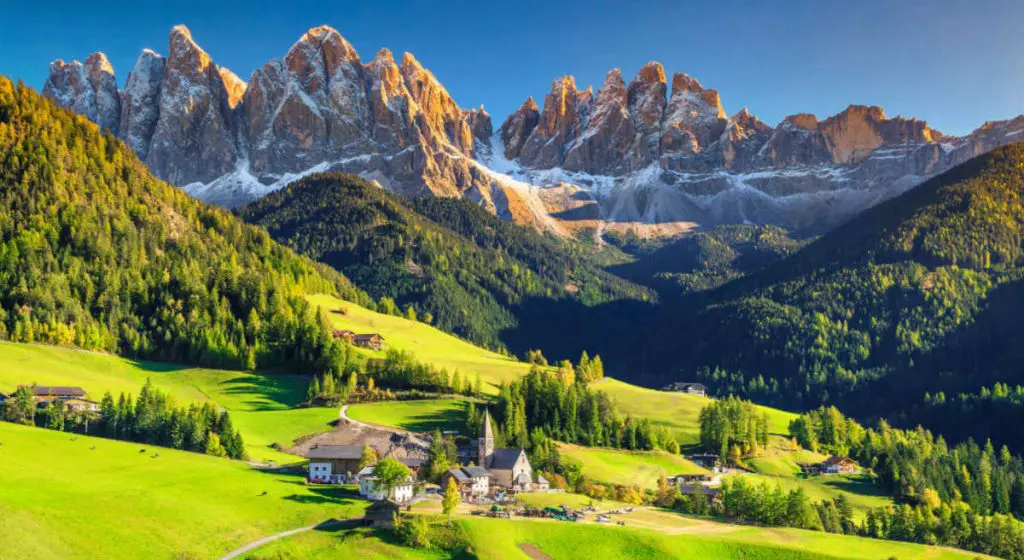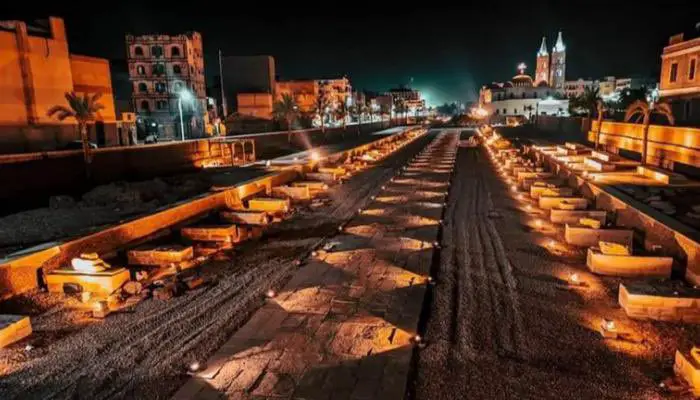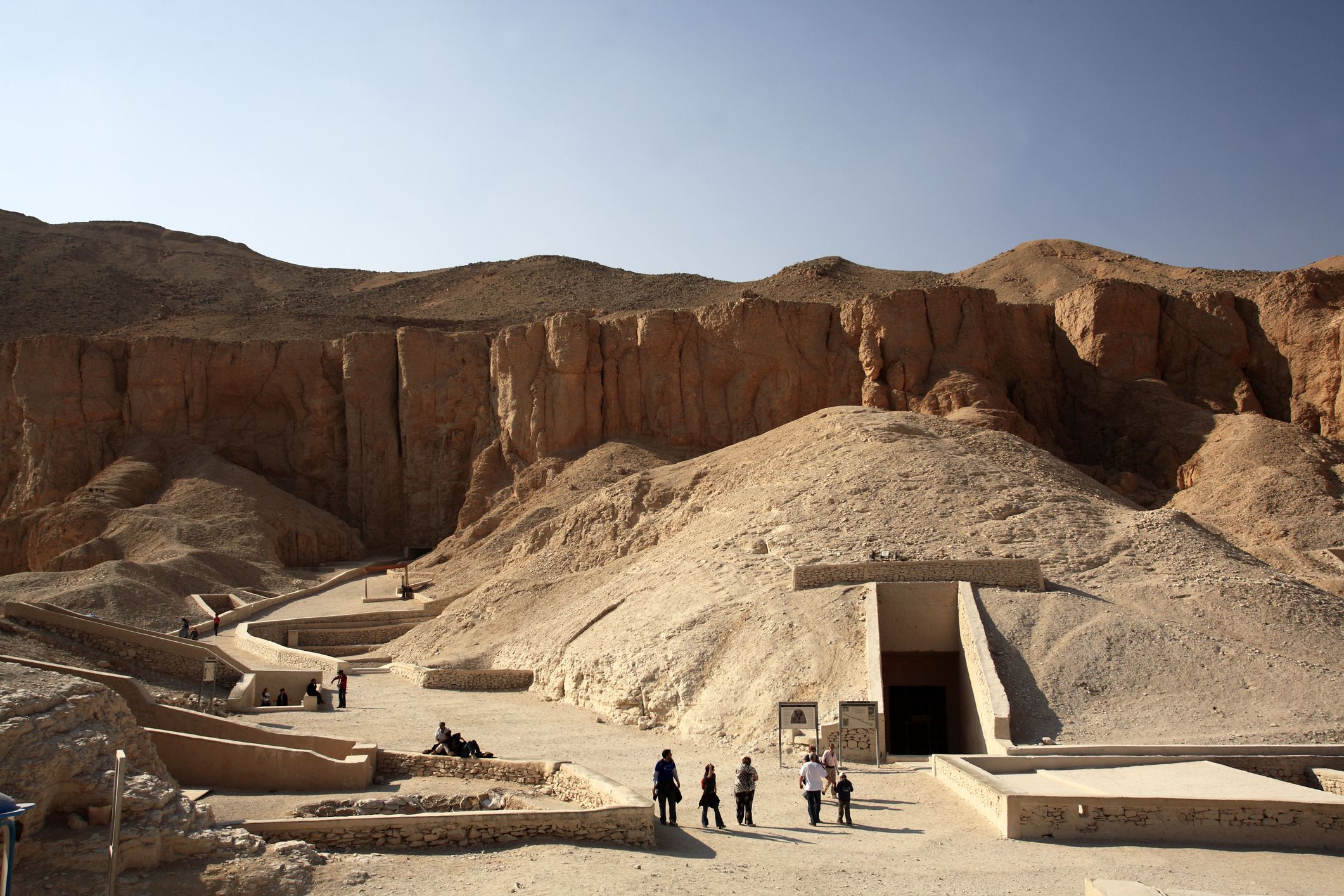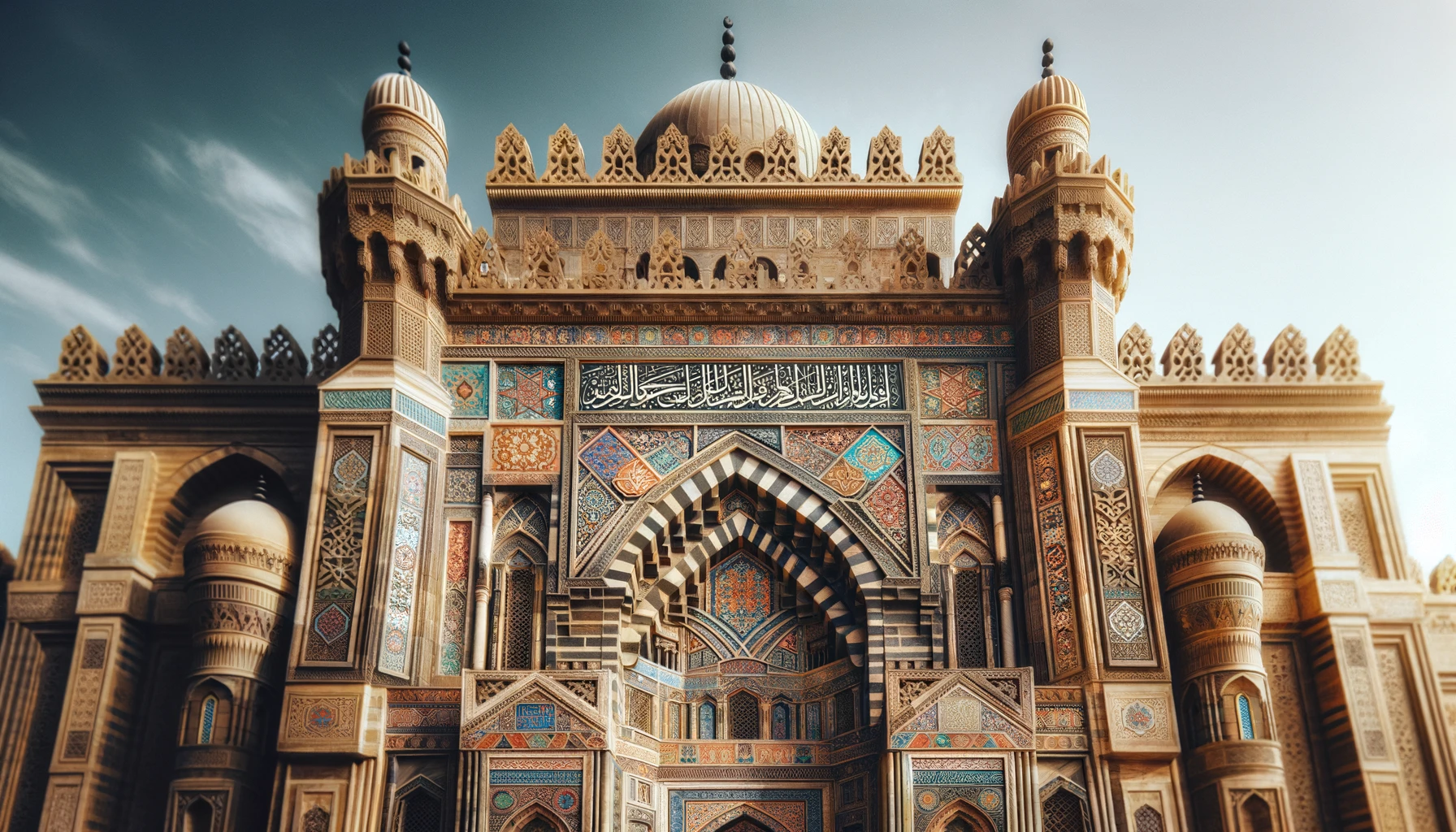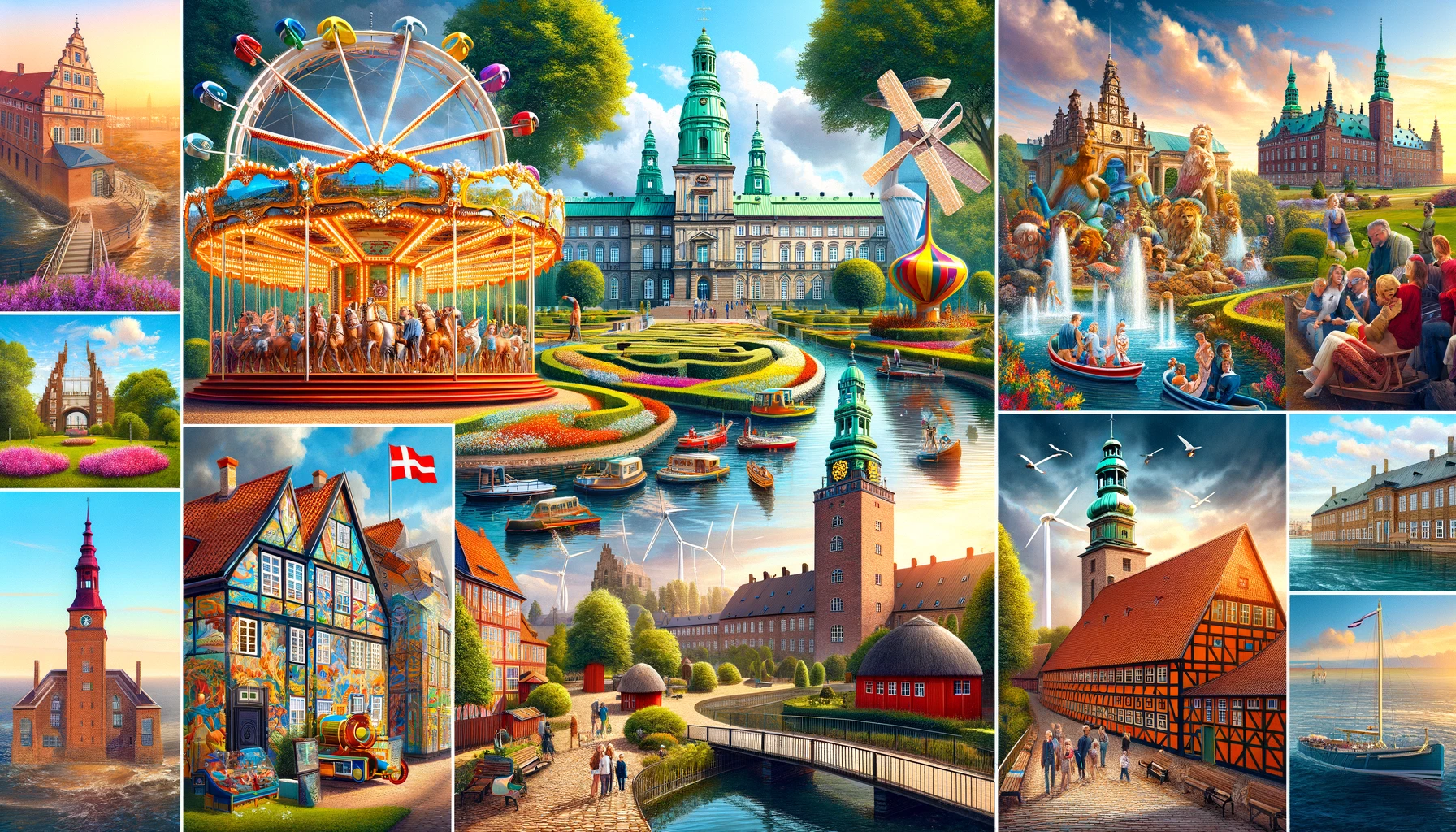Top 5 most amazing castles in Germany
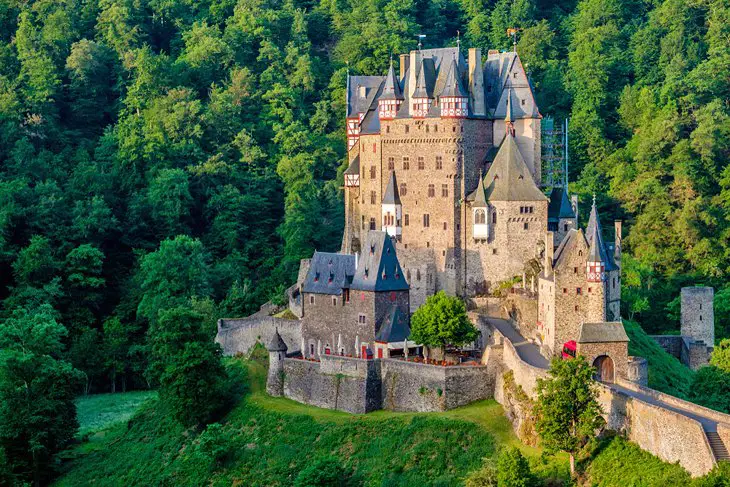
Discover Germany’s vast heritage: more than 20,000 castles and architectural splendors reveal rich history and hidden treasures. Castles in Germany offer architectural marvels, a glimpse into the country’s rich history, from world-famous landmarks like Neuschwanstein to hidden medieval ruins.
We have curated a list of five castles that capture the essence of a true castle experience. Prepare to be enchanted by the inspiration behind the tales of the Brothers Grimm and be transported to a bygone era with towers, towers, and drawbridges.
Discover the best castles in Germany, combining visual grandeur, historical significance, diverse offerings, and unforgettable tourist experiences. Let our guide help you plan your next family adventure.
1- Neuschwanstein:
Designed by the eccentric King Ludwig of Bavaria, Neuschwanstein Castle is an architectural masterpiece. This charming castle blends elements of the neo-Romanesque and neo-Gothic styles with fanciful fairytale motifs.
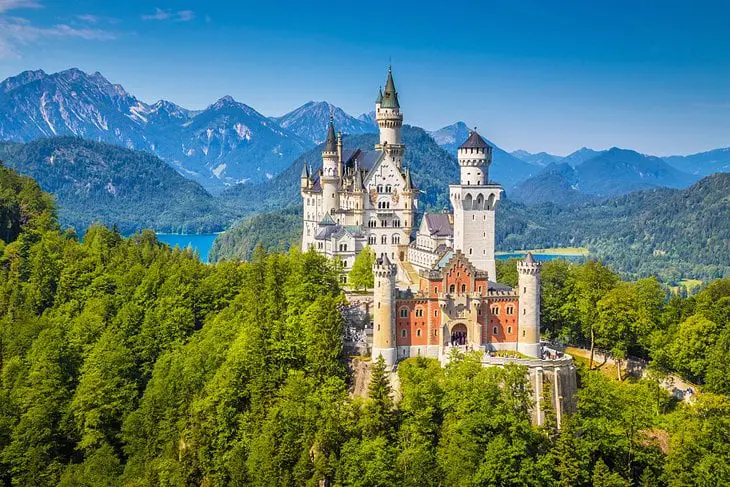

Perched atop a sheer rock surrounded by lush forest, it provides an enchanting backdrop to the Alpine foothills.
Although only a fraction of Ludwig’s planned 200 rooms were completed before his death in 1886, the existing rooms showcase opulence and artistry.
Marvel at the resplendent Throne Room, Singers’ Hall, and Ludwig’s Bedroom adorned with murals, mosaics, arcades, and exquisite carved oak.
Due to its immense popularity, be sure to book your visit in advance. For an immersive experience, consider the 10.5-hour Neuschwanstein Royal and Linderhof Day Tour from Munich, which combines a visit to Neuschwanstein and King Ludwig’s fairytale hunting lodge.
2- Hohenzollern Castle:
Perched atop a mountain in Baden-Württemberg, Hohenzollern Castle has deep historical significance as the ancestral home of the German imperial family, the House of Hohenzollern.


After the end of the monarchy with the abdication of Kaiser Wilhelm II after World War I, the castle became a repository for the family’s royal artifacts.
The 13th-century castle, rebuilt in neo-Gothic style in 1850s, exemplifies 19th-century military architecture.
Explore a luxurious palace and magnificent gate within its fortified walls.
Guided tours reveal the family’s history and royal treasures, including gold works, paintings, and clothing.
The castle hosts one of Germany’s renowned Christmas markets during early December weekends.
3- Schwerin Castle (Schweriner Schloss):
Schwerin Castle, unique in its water-surrounded location, connects to the mainland via a picturesque bridge. Situated in Schwerin, the castle features onion-domed towers and pointed turrets, epitomizing romantic historic style.
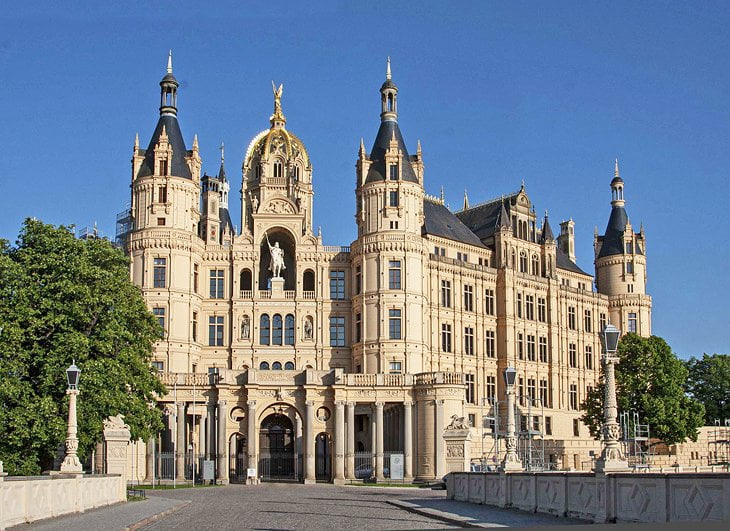

Known as the ‘Neuschwanstein of the North’, it was the Duke of Mecklenburg’s residence since AD 973.
Over time, the castle underwent transformations, with Gothic elements giving way to more decorative additions that demonstrated the wealth and influence of the dukes. In the 19th century, a complete reconstruction by Grand Duke Friedrich Franz II transformed the castle into the picturesque structure that graces today’s landscape.
4- Heidelberg Castle (Heidelberger Schloss):
Perched above Heidelberg’s Old Town, the majestic Heidelberg Castle is a testament to German Renaissance architecture. Constructed of majestic red sandstone, this grand structure dominates the hillside and provides a picturesque backdrop that can be seen from every corner of the city and along the picturesque Neckar River.
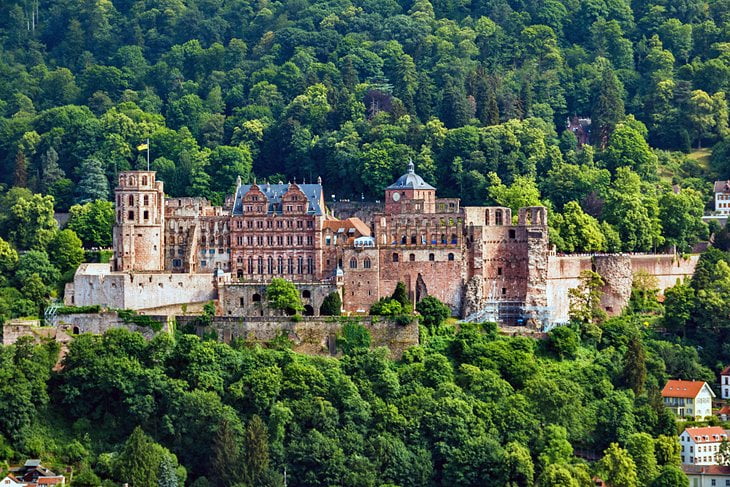

Dating back to around 1300, Heidelberg Castle became the royal residence under Prince-Elector Ruprecht III in the 14th century. However, the castle faced great challenges, as it was destroyed by the French in 1689 and 1693, and then a devastating fire caused by lightning in 1764.
The largest German castle ruin, it offers a picturesque, captivating experience despite its turbulent history.
Regular tours let visitors explore the castle’s courtyard, Pharmacy Museum, and cellar with a giant barrel.
The courtyard hosts concerts, performances, and summer fireworks, creating a lively atmosphere.
Access Heidelberg Castle via the Bergbahn funicular or a walk from Old Town; a round-trip funicular is included with the tour.
5- Schloss Wartburg
Recognized as a UNESCO World Heritage Site, Wartburg Castle is a magnificent monument from the feudal period in Central Europe. This castle, where Martin Luther translated the New Testament, revolutionized the German language and culture profoundly.


12th-century Wartburg Castle was restored in the 19th century, retaining its Middle Ages grandeur.
The 400m high castle entrance features a medieval drawbridge leading to a courtyard with half-timbered buildings.
Explore the restored halls, adorned with period furnishings, offering a peek into medieval and Renaissance eras.
The castle’s extensive collection of over 9,000 historical items offers glimpses into life during those times. Explore the restored halls, adorned with period furnishings, offering a peek into medieval and Renaissance eras.
